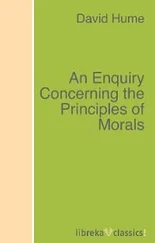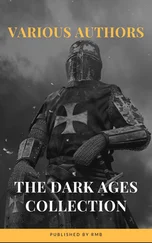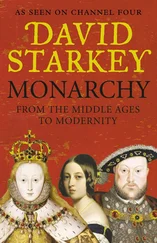The building was completed in A.D. 537, and on December 26 the Emperor and the Patriarch Menas drove together from St. Anastasia to celebrate the inaugural ceremonies. 130But Anthemius had been overbold in the execution of his architectural design, and had not allowed a sufficient margin of safety for the support of the dome. Twenty years later the dome came crashing down, destroying in its fall the ambo and the altar (May, A.D. 558). 131Anthemius was dead, and the restoration was undertaken by Isidore the Younger. He left the semi-domes on the east and west as they were, but widened the arches on the north and south, making “the equilateral symmetry” more perfect, and raised the height of the dome by more than twenty feet. The work was finished in A.D. 562, and on Christmas Eve the Emperor solemnly entered it. The poet Paul, the silentiary, was commanded to celebrate the event in verse, and a few days later 132he recited in the Palace the proem of his long poem describing the beauties of the church. Justinian then proceeded in solemn procession to St. Sophia, and in the Patriarch’s palace, which adjoined the church, he recited the rest. It was a second inauguration, and the effort of Paul was not unworthy of the occasion.
Terrible, thought a writer of the day, as well as marvellous, the dome of St. Sophia “seems to float in the air.” It was pierced by forty windows, the half-domes by five, and men were impressed by the light which flooded the church. “You would say that sunlight grew in it.” Lavish arrangements were made for artificial illumination for the evening services. A central chandelier was suspended by chains from the cornice round the dome over the ambo; the poet compared it to a circular dance of lights:
εὐσελάων δὲ κύκλιος ἐκ φαέων χορὸς ἵσταται.
And in other parts of the building there were rows of lamps in the form of silver bowls and boats.
Justinian did not regard expense in decorating with gold and precious stones the ambo which stood in the centre under the dome. Similar sumptuousness distinguished the sanctuary of the apse — the iconostasis and the altar which was of solid gold. The Patriarch’s throne was of gilded silver and weighed 40,000 lbs. A late record states that the total cost of the building and furnishing of St. Sophia amounted to 320,000 lbs. of gold, which sent to our mint to-day would mean nearly fourteen and a half million sterling, 133a figure which is plainly incredible.
But this, though it was the greatest item in the Emperor’s expenditure on restoring and beautifying the city, was only one. The neighbouring church of St. Irene also rose from its ashes, as a great domed basilica, the largest church in Constantinople except St. Sophia itself. 134The monograms of Justinian and Theodora are still to be read on the capitals of its pillars. More important as a public and Imperial monument was the Church of the Holy Apostles in the centre of the city, which had not been injured by fire, but had suffered from earthquakes and was considered structurally unstable. Justinian pulled it down and rebuilt it larger and more splendid, as a cruciform church with four equal arms and five domes. Though it was destroyed by the Turks to make room for the mosque of Mohammed the Conqueror, descriptions are preserved which enable us to restore its plan. 135San Marco at Venice was built on a very similar design and gives the best idea of what it was like. It may have been begun after the completion of St. Sophia, for it was dedicated in A.D. 546; but the mosaic decoration, of which full accounts have come down to us, was not executed till after Justinian’s death, and it has been shown that these pictures, which may belong to the time of his immediate successors, were designed and selected with a dogmatic motif. “The two natures of Christ in one person are the theme of the whole cycle.” 136The use of pictures for propagating theological doctrine was understood in the sixth century; we shall see another example at Ravenna. 137
The principal secular buildings which had been destroyed by the fires of the Nika riot and were immediately rebuilt were the Senate-house, the baths of Zeuxippus, the porticoes of the Augusteum, and the adjacent parts of the Palace. The Chalke had been burnt down, and the contiguous quarters behind it — the portico of the Scholarian guards and the porticoes of the Protectors and Candidates. All these had to be rebuilt. 138But at the same time Justinian seems to have made extensive changes and improvements throughout the Palace; we are told that he renovated it altogether. 139Of the details we hear nothing, except as to the Chalke itself. You go through the great gate of the Chalke from the Augusteum, and then through an inner bronze gate into a domed rectangular room, decorated by mosaic pictures showing the Vandal and Italian conquests, with Justinian and Theodora in the centre, triumphing and surrounded by the Senate. 140
If the Emperor spent much on the restoration and improvement of the great Palace, he appears to have been no less lavish in enlarging and embellishing his palatial villa at Hêrion, on the peninsula which to-day bears the name of Pharanaki, to the south-east of Chalcedon. 141It was the favourite resort of Theodora in summer; she used to transport her court there every year. 142Here Justinian created a small town, with a splendid church dedicated to the Mother of God, baths, market-places, and porticoes; and constructed a sheltered landing-place by building two large moles into the sea. 143
§ 7. The Fall of John the Cappadocian (A.D. 541)
The nine or ten years following the suppression of the Nika revolt were the most glorious period of Justinian’s reign. He was at peace with Persia; Africa and Italy were restored to his dominion. The great legal works which he had undertaken were brought to a successful conclusion; and Constantinople, as we have just seen, arose from its ashes more magnificent than ever.
But the period was hardly as happy for the subjects as it was satisfactory to their ruler. For a short time the fiscal exactions under which they had groaned may have been alleviated under the milder administration of the popular Phocas, who had succeeded the Cappadocian, and who at least had no thought of using his office to enrich himself. 144But Phocas was soon removed, probably because his methods failed to meet the financial needs of the Emperor, engaged in preparations for the African expedition and in plans for rebuilding the city on a more splendid scale. In less than a twelvemonth John the Cappadocian was once more installed in the Prefecture, and was permitted for eight or nine years to oppress the provinces of the East. 145Justinian did not feel himself bound by the promises he had made to the insurgents, seeing that they had been made in vain. He also restored to the post of Quaestor the great jurist Tribonian, who, otherwise most fitted to adorn the office, seems to have been somewhat unscrupulous in indulging his leading passion, a love of money.
The only person whom John the Cappadocian feared was the Empress. He knew that she was determined to ruin him. He was unable to undermine her influence with Justinian, but that influence did not go far enough to shake Justinian’s confidence in him. He dreaded that her emissaries might attempt to assassinate him, and he kept around him a large band of armed retainers, a measure to which no Praetorian Prefect except Rufinus had resorted before. He was exceedingly superstitious, and impostors who professed to foretell the future encouraged him in the hope that he would one day sit on the Imperial throne. In A.D. 538 he enjoyed the expensive honour of the consulship. 146
Читать дальше












